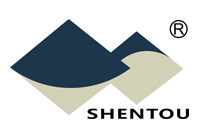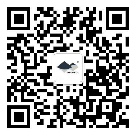CHINA AUTOMOTIVE SUPPLIER QUALITY MANAGEMENT BRIEFING
11/01/2021
Vol. 5, No. 11, November 2021

① QUALITY CHALLENGES & SOLUTIONS WITH YOUR SUPPLIERS IN CHINA
Factory Audits & Quality Inspections
During & Post COVID-19:
On-site Supplier Audits + Remote Participations by International Buyers(VII)
(Continued from the last issue)
▌The implementation of “On-site + Remote” audit
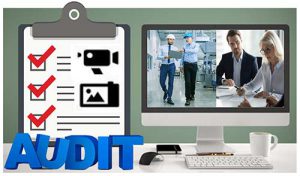 The implementation of “On-site + remote” audit should be based on the pre-determined audit plan with the use of appropriate network communication technologies. The opening and closing meetings and sign-in confirmation, communication and confirmation of various matters in the audit process, as well as inspection and verification activities can be completed with video coverage. The occurrence of audit risks should be minimized as much as possible through real-time video monitoring to make sure the activities of the auditee are under control, and the participants are the same as those confirmed in the earlier stage. During the audit, for the processes or departments requested for participations by customers in the audit plan, the related documents, records, inspections of processes and products with key characteristics should be presented and confirmed online. These documents, once they are photographed and filed under video monitoring, could be used as audit evidence, with the same effect for international buyers as if they were sampled on-site.
The implementation of “On-site + remote” audit should be based on the pre-determined audit plan with the use of appropriate network communication technologies. The opening and closing meetings and sign-in confirmation, communication and confirmation of various matters in the audit process, as well as inspection and verification activities can be completed with video coverage. The occurrence of audit risks should be minimized as much as possible through real-time video monitoring to make sure the activities of the auditee are under control, and the participants are the same as those confirmed in the earlier stage. During the audit, for the processes or departments requested for participations by customers in the audit plan, the related documents, records, inspections of processes and products with key characteristics should be presented and confirmed online. These documents, once they are photographed and filed under video monitoring, could be used as audit evidence, with the same effect for international buyers as if they were sampled on-site.
For the areas within the factory being audited, the main production areas, the key production process and the test center, full-angle photos or video shots could be taken based on what the client has pre-agreed to participate remotely. The photos or videos taken or provided should be archived and managed in accordance with the relevant confidentiality agreement, management procedures, rule or regulations, or requests by associated parties.
For documents, key/special processes and selected points of product inspections that the client has confirmed for participation in the audit plan, factories should make specific video-recordings for evidence collection of the related document contents or the key characteristics of processes or products for detailed further audit. When spot-checking the implementation of the organization’s control requirements, the supplier performance evaluation records should also be inspected in similar way of an on-site audit, including the verification of video, pictures,relevant records and documents, through the use of regular communication tools.
When questions need to be raised during the audit, operators on-site could be asked to answer or demonstrate while being recorded. Video recordings should generally be limited to 15 to 30 seconds in length. To ensure the audit effectiveness, dedicated staff should be assigned to take the video so that auditors on-site or remote could communicate with operators effectively. When no real-time direct communications between remote auditors and operators are possible, operators could explain to the on-site auditors while being recorded for remote auditors to review later. The audit records in these situation would include photos, audio and video records, screen shots of various network communication tools that could be kept as objective audit evidence, and all information obtained remotely should be handled according to confidentiality provisions.
▌Audit report for “On-site + remote” audit and the follow-up on the nonconformity corrections
The audit report of the “on-site + remote” model is primarily the same as for the regular on-site audit. But the report needs to address the communication technologies and methods used in the audit, and the related potential audit risks as well as the uncertain factors during the audit that might impact the audit conclusions, for example potential information leak due to communication technologies, the limitations of the audit tools, and possibly insufficient audit depths and on-site observations.
Network communication technologies could also be used to track and validate the corrections of nonconformities discovered during the audit and the follow-up improvement, in order to help with and improve the audit effectiveness.
▌Supervision of the “on-site + remote” audit
The supervision of the “on-site + remote” audit focuses on the content, methods, frequency and the skills of the use of audit tools by the auditors. It covers supervisions of the entire process and all activities of the implementation of the “on-site + remote” audit plan, including the application software, hardware, the cooperation of the auditee, the audit report and the follow-up nonconformity corrections and improvement, as well as the auditor’s capability. The auditors are the key in the implementation of the “on-site + remote” audit, and are therefore the focus of the supervision. The capabilities and performance of all other participants in the audit should also be supervised.
During the “on-site + remote” audit, the members of the audit teams and other participants (including the staff of the auditee) should be capable of applying the network communication technologies as well as obtaining audit evidence. Therefore auditors are usually trained and evaluated before the “on-site + remote” audits to ensure that they possess the necessary knowledges and skills, and only those qualified could join the audit.
The fact that the clients could not be physically present with face-to-face communications has increased the difficulties of comprehensive observations of the on-site activities and the workload of communication with the auditee. Therefore the performance of the auditors in such audits should periodically be fully observed and evaluated, to make sure that auditors have the proper organization, coordination and implementation skills, and information, records and reports are collected and handled effectively, objectively and authentically.
(To be continued)
By Felix SS YUAN
② CRITICAL FAILURE MODES / QUALITY CONTROL POINTS IN FOCUS
Automotive Lamp
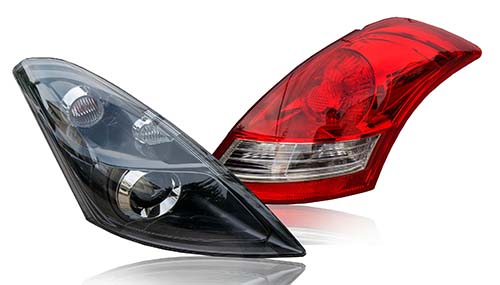
Automotive lamps are an indispensable and important part of modern vehicles. They not only provide functions of lighting and sending signals, but also have to match the entire exterior design. Therefore, in the manufacturing process of the automotive lamps, there are not only requirements for the performance of the lamps, but also strict requirements for their appearances.
▌Classifications
● The automotive lamps that provide lighting: headlamp, front fog lamp, indoorceiling lamp, reading lamp, etc.
● The lamps that send signals: turn signal lamp, parking lamp, brake lamp, various interior work and signal indicator lamp.
● Lamps based on light sources: vacuum incandescent lamp, halogen incandescent lamp, xenon lamp and LED lamp.
▌Critical quality controls
In general lamps are mainly composed of lamp shell, light distribution mirror, reflector, decorative ring, lens, bulb (lamp bead), wire harness, control circuit board and other components.
● For injection molded parts such as lamp shell, the key production factors include: raw materials for injection molding, coordination of moving and fixed molds, screw diameter, injection pressure, pressure holding time, etc. If these are not implemented in accordance with the standards and the processes are not locked, pass rate of injection molded parts will be greatly reduced, the appearance will not meet the standard, and the reliability of the components could not be guaranteed which would result in a series of problems, such as buckle fracture, light distribution mirror cracking, and fog test exceeding the standard and so on.
● For aluminum-plated parts such as light distribution mirror, reflector and lens, the cleanliness of aluminum plating environment, pre-treatment of blank parts and the matching compatibility between aluminum-plating fixture and parts shall be ensured. Otherwise it will also cause problems such as falling off and cracking of the aluminized layer.
● For the assembly of lamps, especially the headlights: track control of glue distribution process, flame pre-treatment before glue distribution, inflation pressure and pressure holding time of air tightness test are critical. Any process error will lead to problems such as water ingress and fogging of headlights.
By Patrick H HAN
③ KEY CONCEPTS & PRACTICES IN SUPPLIER QUALITY MANAGEMENT
Product Realization
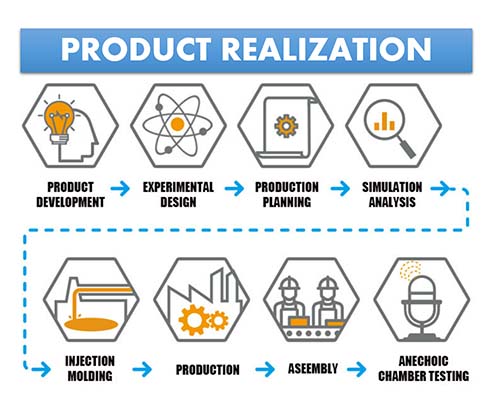
Product realization is a term used in ISO 9001:2015. It covers planning, implementation and control from product design to delivery.
ISO9001:2015 product realization provides clear and certifiable standards for the process of bringing a product to market, including:
●Determining quality objectives for the product;
●Determining requirements for the product;
●Identifying processes required to achieve conformance;
●Establishing processes required to achieve conformance;
●Identifying documents to demonstrate conformance;
●Identifying resources required to achieve conformance;
●Maintaining and retaining documented information.
Based on the above approach, the product could be objectively determined if it has been “realized” and how efficient the process has been.
④ CHINA INDUSTRY & MARKET UPDATE
Cost of raw materials:
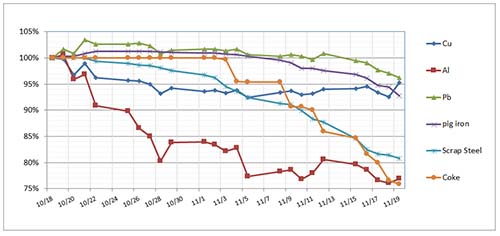
Exchange rates:
![]() USD/RMB: 1:6.3983
USD/RMB: 1:6.3983
![]() EUR/RMB: 1:7.3768
EUR/RMB: 1:7.3768
![]() RUB/RMB: 1:0.0890
RUB/RMB: 1:0.0890
November 2021
Remark: Exchange rates are 30-day average from October 23 to November 22
The above information is for reference only
⑤ IT HELPS TO KNOW...
China Supply Chain Alert

Although traditionally the Chinese New Year celebration will not be over until the 15th day of the first month, for example the 26th of February this year, almost all factories are now back to normal operations.
On the exchange rate side, the USD to RMB has remained fairly stable at around 6.45.
The international shipping costs have come down slightly from their peak at the end of last year and early this year. The following shows the trend of the typical international shipping costs from China to the European Base Ports:
Jun. 2020: USD1000/1500/1550(20GP/40GP/40HQ)
Nov. 2020: USD1750/3100/3400(20GP/40GP/40HQ)
Dec. 2020: USD3500/6500/6700(20GP/40GP/40HQ)
Jan. 2021: USD4900/9400/9400(20GP/40GP/40HQ)
Feb. 2021: USD4500/8650/8650(20GP/40GP/40HQ)
The downward trend is expected to continue in March, but there are no signs yet that the rates would go back to what they used to be at this time of the year.
Immediately after the Chinese New Year, more and more companies have started to request substantial price increases. These requests are mostly based on the recent change of raw material costs for items such as copper, aluminum, iron, alloy and plastic. Some companies have suspended their normal order taking for a couple of weeks.
SHENTOU SUPPLY CHAIN MANAGEMENT CO. LTD. is a Shenzhen, China, based company serving international automotive clients in the implementation of their China strategies and programs. CHINA AUTOMOTIVE SUPPLIER QUALITY MANAGEMENT BRIEFING is a bi-monthly newsletter published by Shentou to address the specific and unique quality challenges and concerns international automotive companies face with suppliers in China. Comments are welcome at qms@shentou.com. Click here to subscribe.
